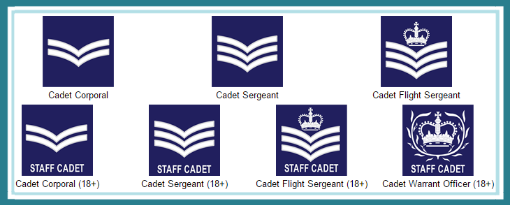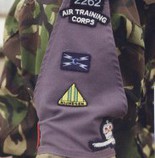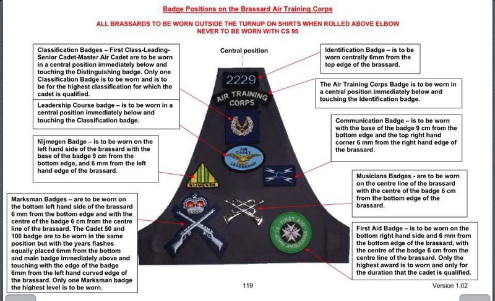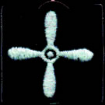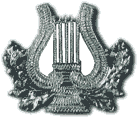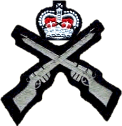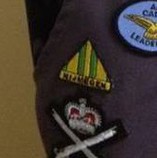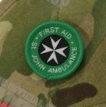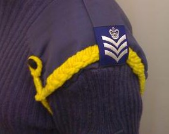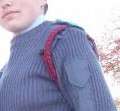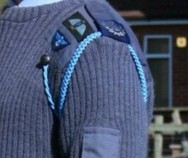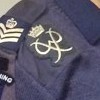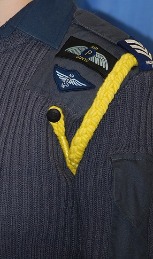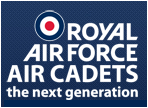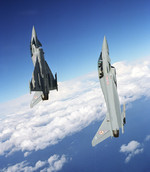Structures; Ranks and Badges
Ranks and Classifications:
Everyone in the Air Cadets can be identified by the badges of rank that they wear. Cadets are given a rank as well as a classification.
From lowest to highest, the classifications go as follows;
Junior Cadet
Second Class Cadet
First Class Cadet
Leading Cadet
Senior Cadet
Master Air Cadet
From lowest to highest, the ranks go as follows;
Cadet Corporal
Cadet Sergeant
Cadet Flight Sergeant
Cadet Warrant Officer
Badges:
The brassard's main purpose is to distinguish which service and squadron or unit the cadet belongs to, as well as his or her classification. It is also one of two parts of uniform that shows any awards the cadet has achieved in the Air Training Corps.
Badges on the brassard;
The brassard is to be fitted over the right sleeve of the jersey or shirt and positioned above the elbow. The top of the brassard is to be fixed by a fabric strap to the riht shoulder strap of the jersey or shirt. The location of the badges on the brassard are as follows;
Bandsman Badge
The Bandsman badge is to be worn on the brassard, in a central position 75mm above the lower edge. Bandsman's badges are only worn in this space where higher priority badges have not been gained. There are four bandsmen badges; Drummer, Trumpeter, Instrumentalist and Piper.
Leadership Course Badge
The Leadership Badge is only to be worn by cadets who have successfully completed the Air Cadet Leadership Course. The badge is to be worn in a central position on the brassard immediately below the classification badge. The badge is not to be worn if the Junior Leadership Lanyard has been awarded.
Extras; NOT worn on the Brassard:
Instructor Cadet Lanyard
The yellow lanyard is worn with the cord fastened over the left shoulder, under the shoulder strap and fasten to a small raised, RAF crested black button sewn centrally on the bottom edge of the left shoulder patch of the jersey - in shirt sleeve order it is fastened to the button of the left breast pocket of the shirt.
QAIC Lanyard
'Qualified Aerospace Instructors Course' lanyard. Cadets who graduated from QAIC will be awarded this blue lanyard.
It is to be worn in the same way as the other two lanyards, however is the most senior of the three.
If a cadet is qualified for both lanyards, the QAIC lanyard should be worn.
Cadet Flying Badges
Gliding, Flying Scholarship and Cadet Navigator badges are to be worn on the left shoulder patch of the jersey as follows;
- When only one of these badges is worn, it is to be worn centrally, 1cm above the lower edge of the patch
- When more than one badge is authorised, the Flying Scholarship or Cadet Navigator badge is worn centrally 1cm above the Gliding badge, and the bottom edge of the Gliding badge is to be worn 1cm above the lower edge of the patch
- Cadets are restricted to wearing only 2 of the flying badges, one to represent their highest level of attainment in gliding and conventional flying

